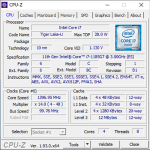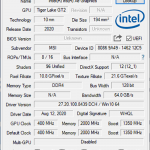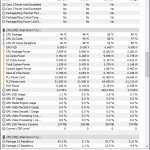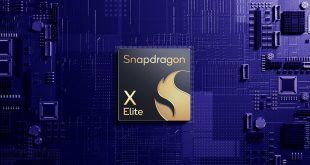The MSI Prestige we were sent is a shining example of a modern thin and light laptop that weighs in at 1.3kg and measures 18mm thick when it is closed. When you open the screen the lower edge of the lid raises the back of the chassis to open a route for airflow through the perforated bottom cover. This compact laptop packs a 14-inch Full HD panel in a chassis that appears no larger than a 13-inch model. In terms of ports and connectors you get two Type C Thunderbolt 4/USB4 that are located closely together. We weren't especially happy about this arrangement but there is no denying the laptop looks very sleek and tidy.
The CPU in this laptop is an Intel Core i7-1185G7 which is a quad core with 8 threads that can operate at a healthy clock speed up to 4.8GHz.
We show in this video and also the one linked above that this is due to the improvements Intel has made in their Willow Cove cores and in particular the SuperFin FinFET transistors. We are not impressed by this slab of marketing speak but are happy to report that Intel appears to have fixed their 10nm process after many years of toil.
The other big change in Tiger Lake is the introduction of Intel Iris Xe Graphics which packs in more Execution Units that run at a higher speed than the Iris Plus Graphics we saw in 10th Gen. Ice Lake. This promises a considerable increase in performance, depending on exactly which version of graphics you are comparing, with an obvious question mark over the power draw. In the case of our MSI sample the Core i7-1185G7 has 96 Execution Units compared to the 64 EUs in the Core i7-1065G7 used in the latest Razer Blade Stealth.
Testing and Performance
Clearly we wish to separate the performance of the Tiger Lake Core i7-1185G7 CPU from the Iris Xe Graphics but there is another factor to consider as the MSI laptop has four separate performance modes that each have a significant impact on power level, CPU clock speed and CPU temperature.
To give an idea how these modes affect the CPU, here are some notes we made during testing:
High Performance Mode PL1 41.5W, PL2 64W = 3.6GHz all cores
Balanced Mode PL1 28W, PL2, 64W = 3.3GHz all cores
Silent Mode PL1 20W, PL2 51W = 2.75GHz all cores
Super Battery Mode PL1 15W, PL2 51W = 2.3GHz all cores
Be sure to check out our sponsors store EKWB here
 KitGuru KitGuru.net – Tech News | Hardware News | Hardware Reviews | IOS | Mobile | Gaming | Graphics Cards
KitGuru KitGuru.net – Tech News | Hardware News | Hardware Reviews | IOS | Mobile | Gaming | Graphics Cards


















